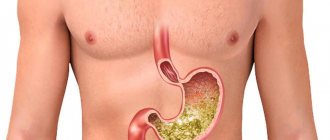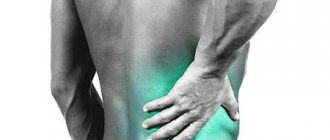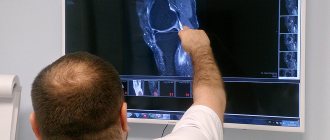What is the most common cause of abdominal pain? When does an aching stomach indicate serious illnesses? When should you visit an endocrinologist? What methods are effective for relieving abdominal pain?
Stomach pain can be caused by various factors. The cause may be, among other things, gastritis, gastrointestinal infections or peptic ulcers. Sometimes, however, there is no organic cause in the gastrointestinal tract. In this case, the condition is called dyspepsia or functional dyspepsia.
Abdominal pain is sometimes not related to the gastrointestinal tract, for example, it is caused by stress or neurological disorders.
Causes of abdominal pain - what does abdominal pain mean?
The content of the article
There are several main causes of abdominal pain:
- Gastritis
. The most common cause of gastritis is infection with the bacterium Helicobacter pylori. This infection is very common. In addition to gastritis, infection with this bacterium is also a risk factor for stomach ulcers and cancer. Gastritis is often asymptomatic, but can also cause abdominal pain. - Hemorrhagic gastropathy.
Another common cause of abdominal pain is acute hemorrhagic gastropathy. This is a type of gastritis with erosions. Abdominal pain occurs after excessive use of painkillers and alcohol, as well as as a result of stress and serious injury. - Foodborne infections
. May also cause pain in the stomach area. Then the pain accompanies infectious diarrhea. The etiological factor of such diarrhea is viruses, bacteria or bacterial toxins. - Dysbacteriosis
. After long-term use of an antibiotic, so-called post-antibiotic diarrhea usually occurs, which consists of a disturbance in the composition of the intestinal bacterial flora. - Peptic ulcer disease
. This condition also produces characteristic pain. The main cause of stomach ulcers is H. pylori infection. Less commonly, ulcers can form as a result of taking non-steroidal anti-inflammatory drugs and steroids. - Dyspepsia in pregnant women
. Dyspepsia, including abdominal pain, is a common complaint among pregnant women. Due to the anatomical changes that occur in a woman's body, heartburn is also a common problem.
Often the cause of ailments mistakenly taken for abdominal pain is pressure on the sensory nerves, for example, with discopathy of the thoracic spine. Then the abdominal pain may be associated with back pain.
Causes of the disease and classification of stomach pain
Stomach pain has certain causes.
Among the most common reasons are the following:
- damage/disorder of the digestive organs;
- stimulation of receptors in the area of ulcerative lesions;
- excessive release of hydrochloric acid;
- convulsive contractions that form in the area of the ulcer.
The symptom of pain can occur with varying strength, frequency and intensity of action.
According to experts, such pain is graded into:
- pulsating (can be caused by convulsive contractions of smooth muscle);
- burning (the main indications for its appearance are a high content of hydrochloric acid);
- pulling (appears a short time after eating);
- sucking (arise due to erosive changes).
Symptoms of abdominal pain - when to contact a gastroenterologist?
Symptoms of abdominal pain
You need to make an appointment with a gastroenterologist if the place where you feel abdominal pain is the upper abdomen, that is, the area under the lower edge of the sternum. Pain in this area may also indicate pathology located in other organs, for example, in the duodenum, intestines, or pancreas.
Pain can be of different natures. With stomach and duodenal ulcers, the pain is burning. She is strong and persistent, but does not interfere with her main activities. Stomach pain occurs at certain times, such as at night or early in the morning. It most often occurs on an empty stomach, a few hours after eating, and decreases after eating or taking antacids.
On the other hand, when a gastric ulcer perforates, patients experience very severe stabbing pain in the abdomen, reminiscent of a knife prick.
In the case of indigestion, that is, dyspepsia, stomach pain is accompanied by pressure in the stomach, a feeling of fullness and nausea. Heartburn, belching and flatulence are also common. Symptoms often appear, mainly after eating.
Symptoms of a foodborne infection usually appear several hours to several days after exposure. The predominant symptom is diarrhea, but gastrointestinal pain and vomiting may also occur.
Get emergency medical help if abdominal pain is accompanied by symptoms such as:
- significant weight loss in a short time;
- abdominal pain that interferes with normal functioning or, for example, sleep;
- gastrointestinal bleeding, manifested as vomiting blood or bloody stools;
- difficulty swallowing;
- palpable swelling in the upper abdomen;
- jaundice;
- signs of severe dehydration such as fainting.
Complications
Gastric dyspepsia occurs in diseases such as esophagitis, GERD, cancer, stenosis or ulcer of the esophagus, cancer or the presence of benign tumors, periesophagitis, scleroderma, diverticulum. Also, the presence of dyspepsia of the stomach and intestines may indicate diseases of the muscles, central and peripheral nervous systems, pathologies of internal organs, for example, narrowing of the esophagus can be caused by cysts and tumors that oppress it from the outside. This also applies to aortic aneurysm, vascular anomalies, and thyroid hyperplasia.
Complications of dyspepsia are most often associated with the underlying illness that causes the appearance of this syndrome. The patient may suddenly lose weight and lose appetite for a long time. One of the severe consequences is Mallory-Weiss syndrome. In this case, the mucous layers of the lower part of the esophagus, where it passes into the stomach, rupture. Because of this, gastric bleeding begins. It can be quite intense and even lead to death. Most often, the occurrence of Mallory-Weiss syndrome is associated with repeated bouts of vomiting.
When to see a doctor
For treatment of stomach or intestinal dyspepsia, you should contact a gastroenterologist. Don't delay going to the doctor. Particular attention should be paid to such symptoms as abdominal pain at night, sudden weight loss for no reason, nausea, vomiting, frequent belching, and heartburn attacks. Diagnostics can be carried out at JSC "Medicine" (clinic of Academician Roitberg), which is located in the center of Moscow.
Diagnosis of stomach pain - what tests should be performed?
When diagnosing abdominal pain, a carefully collected medical history is important. The primary diagnosis is made by when symptoms continue, when they occur, and then when they disappear. The rhythm of bowel movements and possible changes in the appearance of the stool are important. You should also tell your doctor about the warning symptoms mentioned earlier.
A blood test, including a complete blood count, may provide some information about gastrointestinal bleeding or nutritional deficiencies.
It is important to check for H. pylori infection. For this purpose, blood tests, stool tests, or a sample taken during a gastroscopy are most often performed. Gastroscopy is a key method for diagnosing peptic ulcers, as well as some inflammations of the gastric mucosa.
In case of abdominal pain, imaging tests, primarily ultrasound, are mandatory. They allow you to confirm or exclude, for example, gallstones or kidney stones. If symptoms do not go away and all organic diseases of the gastrointestinal tract are excluded, functional diseases of the digestive system, which can cause stomach pain, should be diagnosed. These include, for example, pain in the epigastrium.
Diagnosis of functional disorders is difficult, since during their course nervous pain in the stomach is possible. Therefore, a consultation with a psychiatrist may also be required.
Causes
There are several forms depending on the reasons that cause the development of the syndrome:
- simple dyspepsia. It is also called nutritional. Caused by nutritional problems. In turn, there is fatty (soapy), fermentative and putrefactive dyspepsia. In the latter case, it develops if the food is dominated by protein products or stale meat is used. Fermentation develops from excessive consumption of carbohydrates (bread, cabbage, legumes, sugar) and drinks that cause fermentation (beer and kvass). Fatty dyspepsia develops with excessive consumption of fatty foods, especially pork and lamb;
- dyspepsia associated with a deficiency of secreted enzymes for digesting food in the intestines and stomach. In turn, it can be gastrogenic (lack of enzymes in the stomach), pancreatogenic (deficiency of pancreatic substances), enterogenic (lack of intestinal juices), hepatogenic (insufficient secretion of bile from the liver);
- dyspepsia, which is associated with problems with the absorption of food in the intestines with malabsorption syndrome. As a result, nutritional components do not flow from the intestines into the blood;
- dyspepsia, which is associated with intestinal infections. In this case, it could be either dysentery or salmonellosis.
- intoxication. It manifests itself due to poisoning in various diseases, including influenza, acute surgical pathologies, and also when consuming poisons.
All of these factors can contribute to the onset of the disease. Symptoms and treatment of dyspepsia of the stomach and intestines directly depend on the causes.
Stomach pain - treatment
Treatment for stomach pain depends on the underlying cause. In the case of an active H. pylori infection, it is necessary to kill the bacteria using a combination of antibiotics and proton pump inhibitors (PPIs). The neutralizing effect of PPIs is also used in the treatment of peptic ulcers.
People with peptic ulcers or inflammation of the gastric mucosa are not recommended to use non-steroidal anti-inflammatory drugs such as ibuprofen, diclofenac, ketoprofen and others. They can worsen symptoms and add new ones due to side effects.
On the other hand, in case of pain, paracetamol and diastolic drugs, for example, drotaverine drugs, can be used.
In the treatment of functional dyspepsia, prokinetic drugs that improve the functioning of the digestive system may be useful. Because some cases of abdominal pain can be caused by stress, the help of a therapist may be needed. Antidepressants such as amitriptyline are used to treat such conditions.
Treatment
To treat dyspepsia, drug therapy is necessary. Separately, you need to get rid of diarrhea or constipation, and for this purpose special means are prescribed. Other drugs are also prescribed to treat dyspepsia and alleviate the patient’s condition:
- painkillers (antispasmodics);
- drugs that reduce the level of acidity in the stomach;
- enzyme agents to improve digestion processes.
Treatment must be comprehensive and systemic. It is necessary to treat the disease that caused dyspepsia, that is, gastritis, duodenitis, GERD, cholecystitis, gastric or intestinal ulcers, pancreatic diseases.
Home remedies for stomach pain
Home Remedies for Stomach Pain
Self-monitoring is very important when treating stomach pain. You should eat small portions and monitor how your stomach reacts to certain foods. Excluding or including certain ingredients for several days helps with this.
Anyone with peptic ulcers, gastritis or functional disorders should avoid smoking, drinking alcohol and drinking coffee. Coffee does not interfere with the healing of stomach ulcers, but after drinking coffee or drinking alcohol, stomach pain may intensify.
Some home remedies for stomach pain, such as baking soda, are also not recommended. Sodium bicarbonate neutralizes stomach acid to some extent, which helps with peptic ulcers or reflux disease, but excessive sodium intake is harmful, especially for people with cardiovascular disease.
Lozenges containing neutralizing agents based on calcium and magnesium salts can be used in limited quantities. But herbal medicines are not mentioned in official recommendations for the treatment of these causes of abdominal pain. In case of peptic ulcer and H. pylori infection, only pharmacotherapy is key and should not be replaced by herbs.
There are isolated reports in the scientific literature about the effectiveness of some herbs for functional dyspepsia. Turmeric, licorice root, peppermint, and celandine are mentioned. The capsaicin found in chili peppers is believed to reduce the transmission of pain in the abdominal organs. Because some cases of functional dyspepsia are caused by stress, herbal medications with a sedative effect, such as lemon balm or valerian, may be helpful. But any herbs cannot replace drug treatment, so they are taken only in combination with medications, and only as prescribed by a doctor.
If you find an error, please select a piece of text and press Ctrl+Enter
Diagnosis of dyspepsia
Before starting treatment for dyspepsia, it is necessary to undergo an examination, which includes not only a description of complaints, an external examination, but also the following:
- laboratory tests - general and biochemical blood tests, examination of stool for the presence of blood, coprogram;
- instrumental studies - a test for gastric acid secretion, esophagogastroduodenoscopy, examination of gastric materials for the presence of Helicobacter pylori, ultrasound of the abdominal organs, colonoscopy, radiography, computed tomography, esophageal and antroduodenal manometry.
You can undergo diagnostics at JSC "Medicine" (clinic of Academician Roitberg), which is located in the central district of Moscow, near the Tverskaya, Novoslobodskaya, Belorusskaya, Chekhovskaya metro stations. If you have a disease, you may need to consult not only a gastroenterologist, but also other specialists: a psychiatrist, neurologist, cardiologist, endocrinologist.
Why do hunger pains occur?
This type of pain syndrome usually indicates the localization of the pathological process in the lower part of the stomach (its antrum and pylorus) and/or duodenum. It can become one of the manifestations of simple or erosive gastritis, duodenitis, gastroduodenitis, or peptic ulcer disease, in which the defect in the organ wall is localized in the above areas.
Complications of peptic ulcer
life-threatening complications develop with a peptic ulcer : penetration, perforation (perforation), bleeding and narrowing (stenosis) of the pyloroduodenal part of the stomach.
Ulcers are often complicated by bleeding, even if they did not cause pain. Symptoms of ulcer bleeding may include vomiting bright red blood or a red-brown mass of partially digested blood that resembles coffee grounds, and black, tarry stool. With very intense bleeding, scarlet blood may appear in the stool. Bleeding may be accompanied by weakness, dizziness, and loss of consciousness. The patient must be urgently hospitalized.
Ulcers of the duodenum and stomach can damage the wall of these organs through and through, forming an opening leading into the abdominal cavity. Pain occurs - sudden, intense and constant. It quickly spreads throughout the abdomen. Sometimes a person feels pain, which intensifies with deep breathing. Symptoms are less intense in older people, in people taking corticosteroids or in very seriously ill people. An increase in body temperature indicates the development of an infection in the abdominal cavity. If medical care is not provided, shock (a sharp drop in blood pressure) develops. If the ulcer perforates (perforates), surgery is required.
An ulcer can destroy the entire muscular wall of the stomach or duodenum and invade an adjacent organ, such as the liver or pancreas. This complication is called ulcer penetration .
Swelling of the inflamed tissue around the ulcer or scar from previous exacerbations of the disease can narrow the outlet of the stomach (pyloroduodenal region) or the lumen of the duodenum. With this type of obstruction, repeated vomiting often occurs, and large volumes of food eaten many hours before are released. There is a feeling of fullness in the stomach after eating, bloating and lack of appetite - the most common symptoms of obstruction. Over time, frequent vomiting leads to weight loss, dehydration, and imbalance of minerals in the body. Treatment of the ulcer will relieve the obstruction in most cases, but severe obstruction may require endoscopic or surgical intervention.
Treatment of gastric and duodenal ulcers should only be carried out under the supervision of the attending physician. The fact is that self-administration of various antacids and other drugs that reduce the acidity of gastric juice can alleviate the symptoms of the disease, but this improvement will only be short-term. Only adequate treatment prescribed by a gastroenterologist can lead to complete healing of ulcers.
What will happen if left untreated?
The pathological process, accompanied by “hunger” pains, will gradually progress, one disease will transform into another, and complications will arise. Thus, the erosion will become deeper and deeper and one day form an ulcer, which may subsequently be complicated by bleeding, perforation, or even transform into a malignant tumor. It is easier to eliminate any disease at an early stage than at the stage of complications.
How to treat?
This, of course, directly depends on the disease that will be diagnosed. Undoubtedly, one of the components of treatment will be a diet that excludes fatty, fried, hot, spicy foods that increase acid formation in the stomach, alcoholic and carbonated drinks.
Drug treatment may include drugs from the following pharmacological groups:
- antibiotics (for diagnosed peptic ulcer disease, the causative agent of which, as is known, is the bacterium Helicobacter pylori);
- proton pump inhibitors (omeprazole, rabeprazole, lansoprazole, etc.);
- prokinetics (domperidone);
- gastroprotectors (for example, bismuth preparations - De-nol, Vis-nol and others);
- antispasmodics (No-shpa, Meverin);
- antacids (Gaviscon and others)…
In severe cases, for example, if an ulcerative defect on the mucous membrane of the duodenum is not amenable to drug treatment, the patient cannot do without surgical intervention. Fortunately, such situations do not happen so often, and with the help of conservative methods it is still possible to defeat the disease.
Clinical picture of peptic ulcer
The most consistent and important symptom of peptic ulcer disease is pain. Pain in peptic ulcer disease has a clearly defined rhythm (time of occurrence and connection with food intake), and seasonality of exacerbations.
Based on the time of occurrence and their connection with food intake, pain is distinguished between early and late, night and “hungry”. Early pain occurs 0.5–1 hour after eating, lasts 1.5–2 hours and decreases as gastric contents are evacuated. Such pain is more typical for gastric ulcer in the upper part.
Late pain appears 1.5–2 hours after eating, night pain occurs at night, and “hungry pain” occurs several hours after eating and stops after eating. Late, night and “hungry” pains are more typical for the localization of an ulcer in the antrum of the stomach or duodenal ulcer.
The nature and intensity of pain may vary (dull, aching, burning, cutting, cramping). The localization of pain in peptic ulcer disease is different and depends on the location of the ulcer: with an ulcer on the lesser curvature of the stomach, pain often occurs in the epigastric region, with duodenal ulcers - in the epigastric region to the right of the midline. With ulcers of the cardial part of the stomach, pain can be behind the sternum or in the heart area; in this case, it is important to differentiate peptic ulcer disease from angina pectoris or myocardial infarction. Pain often occurs after taking antacids, milk, food, and even after vomiting.
In addition to pain, the typical clinical picture of peptic ulcer disease includes various dyspeptic symptoms.
Heartburn is one of the early and frequent symptoms characteristic of peptic ulcer disease. Heartburn can occur at the same time after eating as pain. It often precedes the onset of pain, and subsequently is often combined with pain. These two symptoms are closely related, and some patients have difficulty distinguishing between them. In later stages of the disease, heartburn may disappear. But sometimes it can be the only subjective manifestation of a peptic ulcer.
Belching is a fairly common, but not specific symptom of peptic ulcer disease. The most typical belching is sour. The appearance of belching is associated with impaired evacuation of gastric contents due to prolonged spasm and severe inflammatory edema of the pylorus or duodenal bulb. It should also be remembered that belching is characteristic of a diaphragmatic hernia.
Nausea and vomiting are dyspeptic symptoms characteristic of exacerbation of peptic ulcer disease. Nausea is often accompanied by vomiting, although vomiting can occur without preceding nausea.
Vomiting in patients with peptic ulcer disease often has some specific features: firstly, it occurs at the height of pain, being, as it were, the culmination of pain; secondly, it brings significant relief. Vomit, as a rule, has an acidic reaction with an admixture of recently eaten food. Vomiting can also occur on an empty stomach.
Appetite in case of peptic ulcer is usually preserved or even increased (the so-called painful feeling of hunger). Decreased appetite is possible with severe pain syndrome; fear of eating may occur due to the possibility of pain occurring or increasing. Decreased appetite and fear of food can lead to significant weight loss for the patient.
Constipation is observed in half of patients with peptic ulcer disease, especially during exacerbation. Constipation in peptic ulcer disease is caused by a number of reasons: spastic contraction of the colon, a gentle diet, poor coarse fiber and the resulting lack of intestinal stimulation, limitation of physical activity, and the use of antacids (Almagel, etc.).
Symptoms depend on the location of the ulcer and the age of the patient . In some cases there may be no pain (painless ulcers). In these cases, ulcers are discovered when complications develop (ulcer bleeding, ulcer perforation - breakthrough of the ulcer wall into the abdominal cavity, penetration of the ulcer). Only about half of people with duodenal ulcers (duodenal ulcers) have typical symptoms. In children, the elderly, and patients taking certain medications, symptoms may be atypical or absent altogether.









